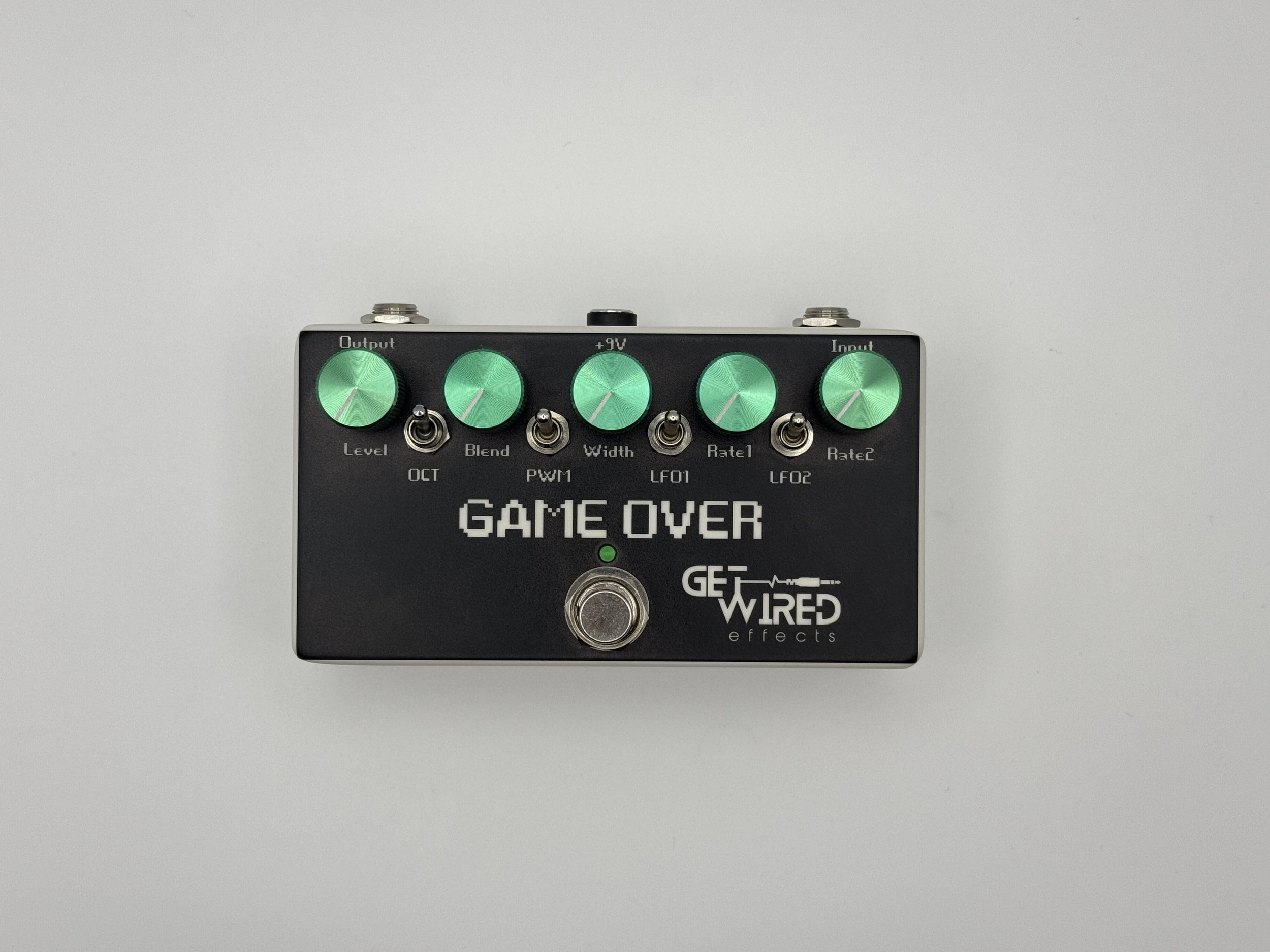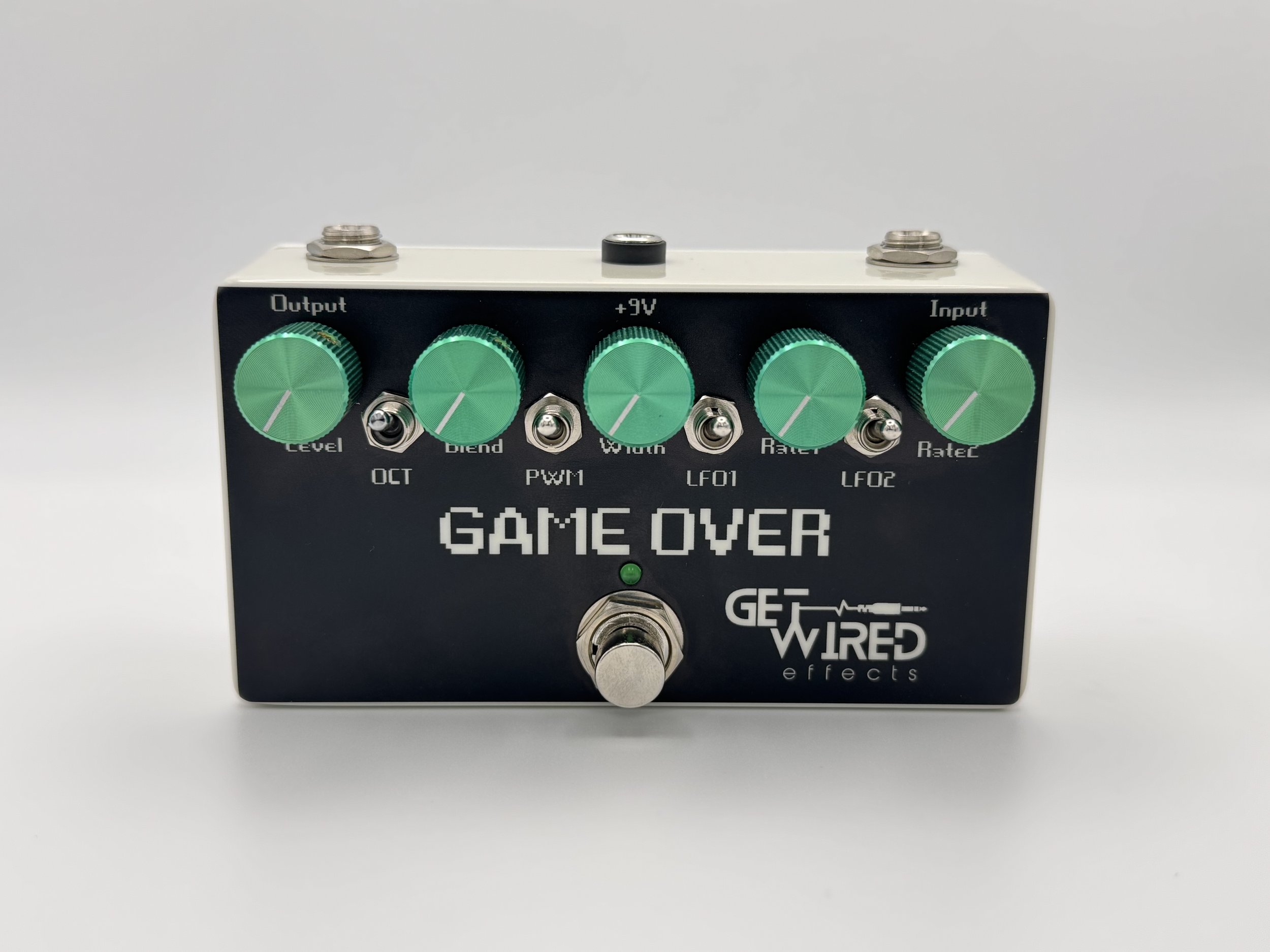Bio:
1985 called and they want their NES sounds back! This isn't just some musical "sidequest."
Set aside your game genie and recreate those Koopa-Troopa crushing sounds that the kid in you loved and distort your world back to the planet Zebes.
Drop your tuning and Deploy smart bombs as chord after chord leaves the sounds of devistation to alien invaders and fans alike.
The Game over "selects" you to "start" your epic journey and unlock the tones you've saved for a new adventure.
Game over can produce a plethora of vintage video game type sounds. It’s a square wave fuzz tone with options for octave up, octave down, two octaves down, pulse width modulation, tremolo, and pulsing/alternating octaves.
The Controls:
Level: controls the output volume
Blend: allows you to control the mix between the high octave PWM circuit and the low octave/tremolo circuit. All the way down for PWM and all the way up for low octaves.
Width: controls the width of the PWM, acts mostly like a tone control
Rate 1: controls the speed of the PWM modulation which sounds similar to a phaser.
Rate 2: controls the speed of the tremolo
OCT: 3 position switch that selects between 1 octave down, 2 octaves down or both
PWM: This selects either a pulse width modulation signal or an octave up
LFO 1: toggles the rate1 knob on or off
LFO 2: 3 position switch, up for alternating octaves, down for tremolo, middle is off.




